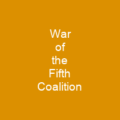Austria, a landlocked country nestled in the heart of Central Europe, has a rich tapestry of history that spans millennia. Imagine stepping back into time to explore its storied past—where empires rose and fell, and cultures intertwined like threads in a vibrant tapestry.
The Historical Tapestry
Austria’s story begins long before the modern nation-state came into existence. The land was inhabited since the Paleolithic period, with various tribes such as Celts, Romans, and Germanic tribes leaving their mark over time. By the 12th century, Austria emerged as a unified state, initially as a frontier march of the Holy Roman Empire, before evolving into a Duchy and Archduchy.
Over centuries, Austria became a major imperial power in Central Europe. However, its defeat in World War I led to the collapse of the empire and the establishment of the Republic of German-Austria, which later evolved into Austria-Hungary. After World War II, Austria regained its sovereignty and declared neutrality, becoming a semi-presidential democracy with high standards of living.
The Habsburg Dynasty
The Habsburgs ruled over Austria from the 14th century until the end of World War I. Under their reign, Austria accumulated other provinces and became a birthplace of classical music. The Babenberg dynasty preceded them, ruling from 976 to 1246 before their line was extinguished.
Notable events include Emperor Frederick III’s son Maximilian marrying Maria of Burgundy, acquiring the Netherlands, while Philip the Fair married Joanna the Mad, gaining Spain and its colonies. The Habsburgs’ influence extended far beyond Austria, shaping the political landscape of Central Europe for centuries.
The Anschluss and Beyond
After World War I, Austria faced significant challenges, including the exclusion from Germany, leading to national identity issues and ethnic tensions. The language decree of 1897 sparked protests against minister-president Kasimir Count Badeni, leading to the Away from Rome movement.
The Anschluss in 1938 marked a dark chapter in Austria’s history, with the country annexed by Nazi Germany. Despite high turnout and overwhelming support for the union, many Austrians were not always welcomed by German soldiers, especially in Vienna. The Aryanisation of Jewish wealth began immediately after the Anschluss, followed by violent attacks on Jews during the November pogrom in 1938.
The Modern Era
Following World War II, Austria declared its independence and neutrality, becoming a member of the European Union in 1995. The country’s political landscape is characterized by coalitions between major parties like the Social Democratic Party (SPÖ) and the Austrian People’s Party (ÖVP).
Austria’s economy is highly industrialized with a well-developed social market economy, heavily influenced by its trading partners, particularly Germany and the European Union. The country faces health challenges but has high spending per capita and a strong musical tradition, contributing to various forms of art.
Geography and Culture
Austria’s geography is dominated by the Alps, with diverse regions including Eastern Alps, Austrian foothills, Pannonian low country, Austrian granite plateau, and Vienna basin. The official language is German, but Bavarian and Alemannic dialects are widely spoken.
The country has a rich cultural heritage, with famous composers like Mozart, Haydn, and Schubert, as well as significant contributions in science, philosophy, and economics. Austrian cuisine features dishes like Wiener Schnitzel and Sachertorte, while sports culture is particularly strong in alpine skiing and football.
Conclusion
Austria’s journey from a land of ancient tribes to a modern nation-state is a testament to its resilience and adaptability. From the Habsburgs’ grandeur to the challenges of World War II, Austria has navigated through turbulent times, emerging as a beacon of culture, music, and neutrality in Europe.

You want to know more about Austria?
This page is based on the article Austria published in Wikipedia (retrieved on March 7, 2025) and was automatically summarized using artificial intelligence.






